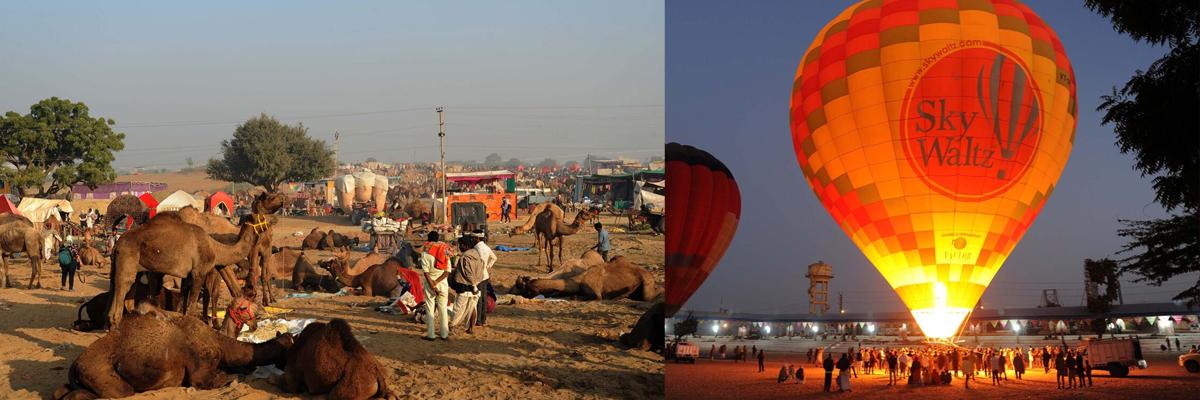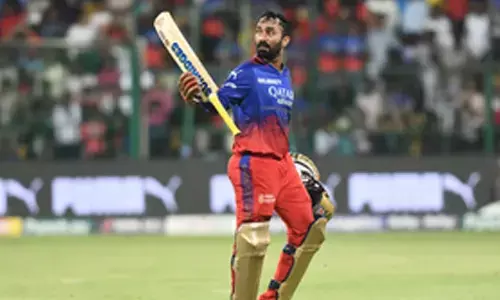The magic of Pushkar

We were little aware of the surprises that were in store for us when we arrived in Pushkar during the camel fair season The town was wearing a festive look and the main market was glowing in colourful lights Our stay was in Hotel Marudhar, a familyrun homestay on the Kapaleshwar Road,
We were little aware of the surprises that were in store for us when we arrived in Pushkar during the camel fair season. The town was wearing a festive look and the main market was glowing in colourful lights. Our stay was in Hotel Marudhar, a family-run home-stay on the Kapaleshwar Road, at a stone’s throw away from the mela ground, where most of the fair-based activities were going to take place. Our hotel manager Sirish told us that thousands of camels had arrived on the sand dunes and we should plan a pre-dawn visit for a memorable experience. After a sumptuous dinner in Hotel Aroma, we called it a day.
Hindu mythology attributes the creation of Pushkar to Brahma. The one and only temple dedicated to Brahma is in Pushkar. A festival in honour of this deity is held on the Kartika Poornima. This event coincides with the Pushkar Camel Fair that draws a huge crowd of pilgrims, tourists and photographers. Besides being a delightful experience with its enormous exposition of camels and horses, it is a combination of religious rituals, social gatherings, cultural events, commercial activities, fun filled traditional plays, camel safaris, musical programmes, thinly overlapping, in perfect symphony. An interesting mythological history and a legacy of timeless architectural heritage make Pushkar a fascinating destination.
The nerve-biting cold wave swept through the whole night. Next morning at 5 am, we sipped tea at a small hotel and joined a group of foreign tourists heading towards the sand dunes. Pushkar has a mythical allure and magnetism of its own! While the moon and the stars created a canopy of heavenly illumination, the small orange bonfires lit up by the camel traders in the darkness gave them a respite from the cold.
They were making tea in copper vessels over a small fire lit up in the sand, and sipping tea while mist was rising on all sides. There were thousands of camels, looking like ghosts, bloating and bellowing, all around us. The break of dawn transformed the landscape into a visual wonder. Life revolves around the ancient Sarovar (lake) surrounded by 52 ghats. Ramayana says that sage Vishwamitra performed penance (tapa) here and the celestial enchantress Menaka comes to bath in the lake’s serene waters.
The great Indian poet, Kalidas immortalised Pushkar in his classic, ‘Abhijñâna Sâkuntalam’. In 1073 AD, the Rajput kings of Bundi, Bikaner and Jaisalmer made valuable contributions in making and developing the ghats and structures around the sacred lake. One of the first contacts between the Mughal and the British took place here when Sir Thomas Roe met Emperor Jahangir in 1616 AD. It was subsequently taken over by the Scindias. Later, it was handed over to the British in 1818 and became one of the few places in Rajasthan, which remained under the control of the British rather than being part of a princely state.
Pushkar has 400 temples. Narrow lanes and bylanes took us to the Old Rangji Temple, built by Seth Puranmal Ganeriwal of Hyderabad in 1844 AD. Its high rising gopuram is typical of south Indian temples and the shrine shows the confluence of south Indian (Dravidian), Rajput and Mughal styles of architecture. After visiting the Varaha Temple, we sat on the stairs of nearby Varaha Ghat.
Sounds of ringing bells coming from numerous temples and the chants of mantras filled the air, amidst the fragrance of roses and incense sticks. Thousands of pilgrims attended the Maha Aarti at the lake. The lake waters mirrored the changing colours of the sky and the night unfurled above us like a star-studded sheet of calm. Next morning, two groups of foreign tourists boarded two hot air balloons at the mela ground for a balloon ride.
The huge balloons were inflated with hot air and slowly lifted off filling the skies with colourful hues. Hours later, the mela ground was scattered with small groups of audiences encircled around an array of musicians, nautankis, acrobats and snake charmers. While the monkeys performed the tricks, their masters narrated interesting tales and swayed the audiences with their antics. Many camels were tattooed, decorated with colourful tassels, mirrors and jewellery and made to look as colourful as the fair all around. They took part in a beauty parade and dance competition and prizes were announced for the winners.
We decided to lose ourselves in the colours of festivities. A gorgeously decorated stage, equipped with state-of-the-art lighting, set a perfect backdrop for a musical evening in mela ground. Navraj Hans enthralled an international audience with Hindi, Punjabi and folk songs and the audience danced to his beats. Cultural and musical programmes were lined up at the mela ground for a week.
Pushkar is a shopper’s paradise, it becomes more so during the fair. A huge colourful market had sprung up outside the mela ground. It had stalls selling lovely colourful bangles, beads, necklaces, embroidered shawls, clothes embedded with mirrors, textiles, ethnic jewellery, costume jewellery, miniature paintings, beautiful wall hangings, blue pottery, puppets, brass utensils, leather goods, shoulder bags, and ropes; the list was endless!
We took a stroll on the market road. It connects the ghats to the mela ground and captures the essence of Pushkar. It is dotted with ghats, cafes, tiny stores and colourful shops converted into hotels. The whiff of freshly prepared samosa, kachori and mirchi vada, the smell of hot tea, the fragrance of rose flowers and incense sticks, the mellifluous sounds of temple bells and the chants of hymns, all blended together and transported us to a different world. We tasted the sweet rabadi malpuas at Sarweshwar Sweet Shop in Halwayi Gali.
We met Ashok Tak at his Collector’s Paradise Museum, the Vintage Art Gallery Museum. He is a famous camel decorator, tourism promoter a recipient of many awards. We were very much impressed by the humble nature of this eminent personality as we chatted over a cup of tea. He has been working tirelessly to save camels and keep alive the dying art of camel decoration. He told us that camels are the lifeline of the desert people; he had learnt the art of camel decoration from them and he wanted to decorate camels for the future generations.
He started collecting regalia (ceremonial dress, objects and insignia) from different people, and gradually this hobby enriched his museum collection over a period of time. The museum has a vast collection of camel accessories, richly embroidered textiles and decorative items collected from Rajasthan, Gujarat and other states.
A safari in a camel-pulled cart took us to the gardens of amla and roses and the small township of cameleers in the sand dunes. At the sunset point, we watched the sun go down as the evening wrapped a loving arm around the shoulders of a sun-baked day, all in the backdrop of camels, while the folk singers sang Rajasthani folk songs around us!
The full moon of Kartika month was a couple of nights away, and the stream of pilgrims was swelling at the Brahma Temple. Village women in intricately embroidered, swirling skirts, were spontaneously pulling the ghunghat (veil) over their faces at the sight of a stranger! Pushkar had transformed into a sea of colours and was reverberating with romance and music!
- MA Khan




















